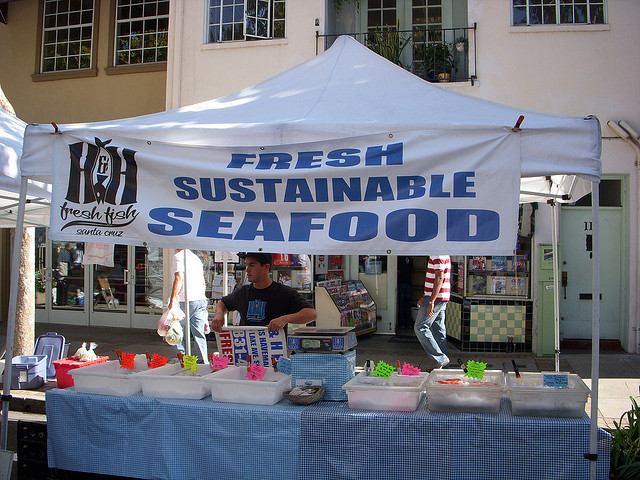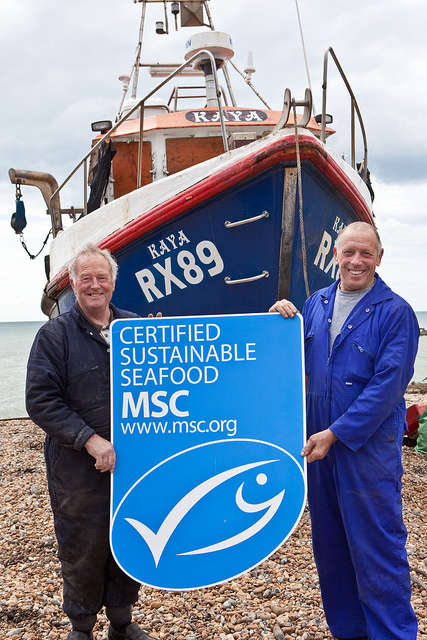Sustainable Seafood and Commercial Fishing
Many of the world’s commercial fisheries are really hurting. Some have even collapsed. Mismanagement of the Cod fisheries off the coast of New England and some of the Orange Roughy fisheries in Australia in the 20th century led to their pretty much non existence today. According to the Sustainable Seafood Coalition (SSC) around half of the fisheries around the world have been fished at an unsustainable level. However, not all commercial fisheries in the world are all doom and gloom. Many of the fisheries in Alaska are some of the best-managed in the world. Troll caught Albacore and Skipjack Tuna caught in the Pacific Ocean and Spiny Lobster from Mexico are also quite sustainable. Many consumers recently have jumped on the sustainable band wagon and sustainable fisheries will be good for improving the market penetration of seafood as well as helping out the ocean environment.

The four main reasons that may lead to a fishery becoming unsustainable are overfishing, bycatch, habitat destruction and illegal, unreported and unregistered (IUU) fishing. Many people believe that farming fish is the way to go to try to reverse this trend but a lot of the high volume farms create damaging amounts of waste, have breakouts of potentially really dangerous diseases (especially if they got in the wild fish species nearby) and the feed these fish are fed is often not sustainable. For instance, on a lot of farms it takes 2-5 kg of wild fish to grow 1 kg of farmed fish. The fact that a lot of this wild fish is caught in the developing world where there tend to be fewer regulations is horrible as the developing world incredibly reliant on seafood for their protein consumption. According to the World Wildlife Foundation (WWF) there are near 3 billion people on the planet that are reliant on seafood for their animal protein consumption. The video below gives a decent explanation of seafood sustainability and how we can make good choices when buying seafood (Buying more Wild Alaskan Salmon is always a good start!! haha).
Sustainability issues with commercial fishing exist all over the world. You would think that developed nations are this under better control but this is not always the case. Japan, Russia, Australia and the USA are just some of the developed countries that have been involved in at least some unsustainable commercial fishing practices. And on the other side of the coin there are some developing nations who have or are working quite hard to convert their commercial fisheries to a sustainable model.
The Developed World
I find there are a lot of generalizations being spouted by people throughout the world these days (especially on the internet) and I believe the fact that commercial fishing is unsustainable is one of those. According to Ocean Conservancy the seafood catch by American Fishermen has reached a 17 year high and species such as red snapper and lingcod are recovering well. And from my experience due to work by the local fish hatcheries and good management salmon runs in Bristol Bay, Alaska and Juneau, Alaska have had some really good harvests in the last decade. If more fisheries work on their management and regulations than many more will be able to become sustainable. However, this will require international cooperation which it seems in fishery management is somewhat hard to come by. Even though recently the Crab Fishermen from Russia and the US have been working on getting rid of IUU crab fishing in the Bering Sea.

One of the hardest hit and most vulnerable type of commercial fishery is the deep-sea variety. Where as salmon only takes a few years to be full-grown many fish species in the deeper parts of the ocean (1000ft+ down) can take decades. For instance the Orange Roughy takes 30 years to sexually mature. At least one developed country has pretty much wiped out their stocks of this species (Australia). According to the Marine Conservation Institute deep-sea trawlers (who can fish as deep as a mile) have wiped out multiple fish species and damage the ecosystems they live in every day. The fact that these trawlermen get over $100 million a year in subsidies to do it is a joke. This money should be put into further developing sustainable fishing practices.
The developed world needs to lead in creating sustainable fisheries so that it is easier and economically viable for the developing world to do the same.
The Developing World
In my opinion the fish in the developing world are even more important to people around the world. This is because huge amounts of the population lives in these countries and depend on fish and seafood protein for their daily sustenance. Many people in Asia and Africa only survive because of the fish them or their families catch on a daily basis, and without this resource they would be unable to buy other food to eat. To some extent you cannot blame the depleted stocks of fish in these areas fully on the countries near them. Many of these countries are so poor that they cannot enforce many of the fishery regulations they have and it is easy for large fishing boats such as trawlers to come in from richer countries and pillage their seafood resources without any possible recourse.
There are a number of things that can be done for the sustainability of fisheries in developing countries to be improved. For instance, they could ask for help from other countries (both developed and developing) for ideas and help with creating and maintaining sustainable fisheries. And in the video above there are some great successes being had by some developing countries. Fisheries in Gambia, the Maldives (Skipjack Tuna) and Mexico (Lobster) are being turned into great triumphs. This is occurring because well organised and passionate members of local fishing groups and organisations are pushing for it. As it is said in The Field of Dreams, “If you build it they will come”.
There’s a good article in the Lynden newspaper ; $3.3 million granted to the natives of Whatcom county for aid in habitat and re-development of salmon and trout fisheries.
LikeLike